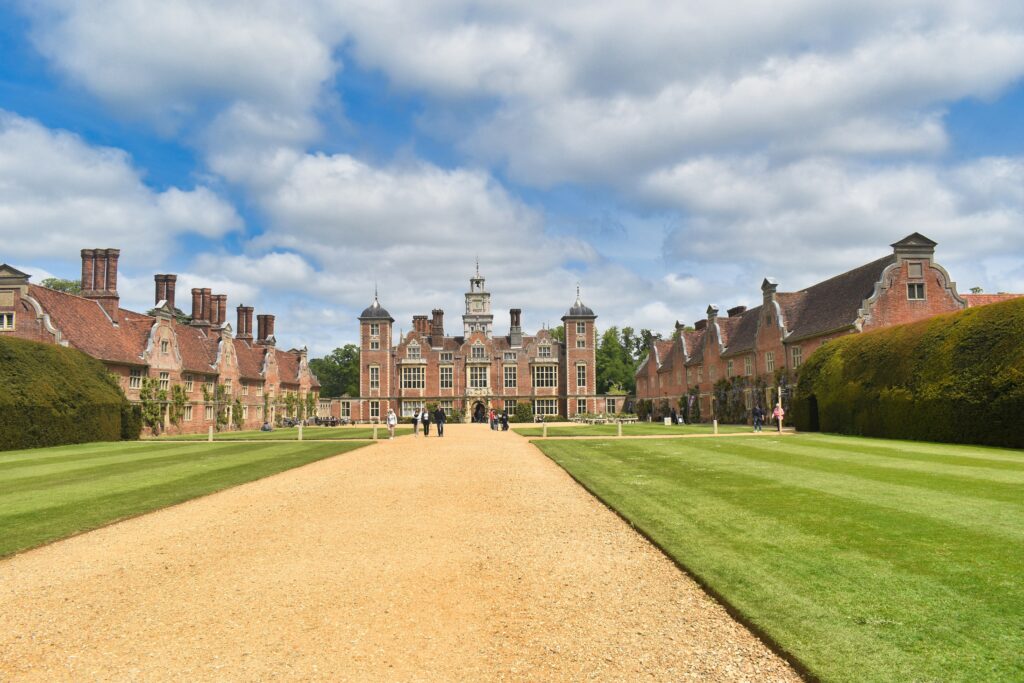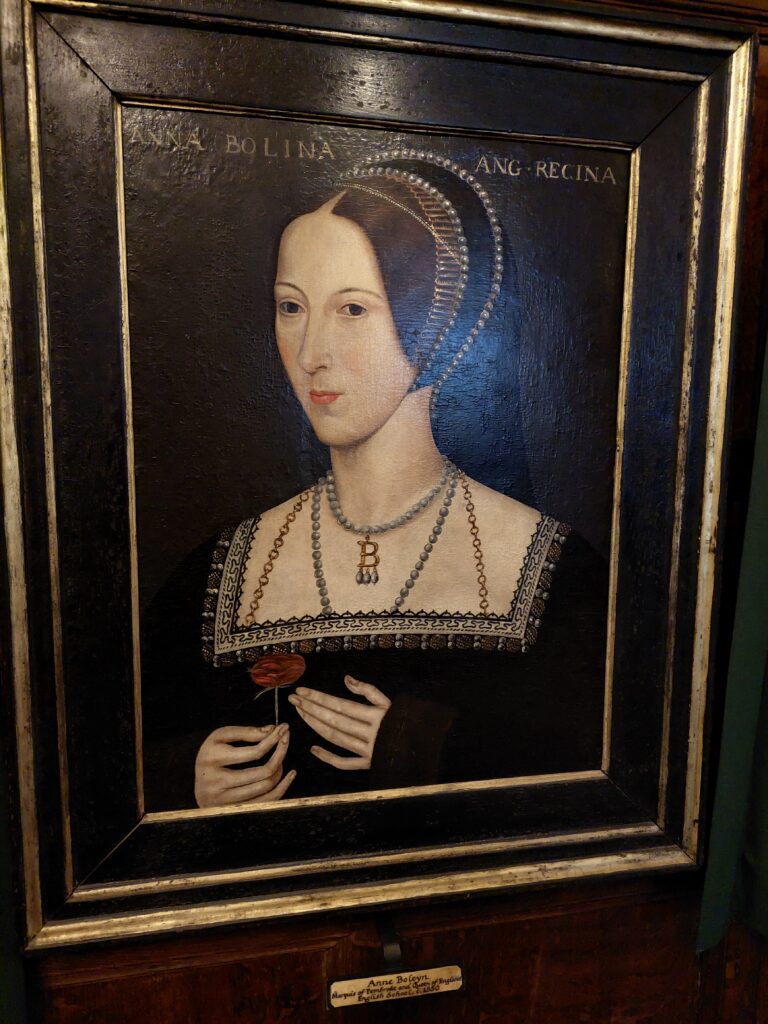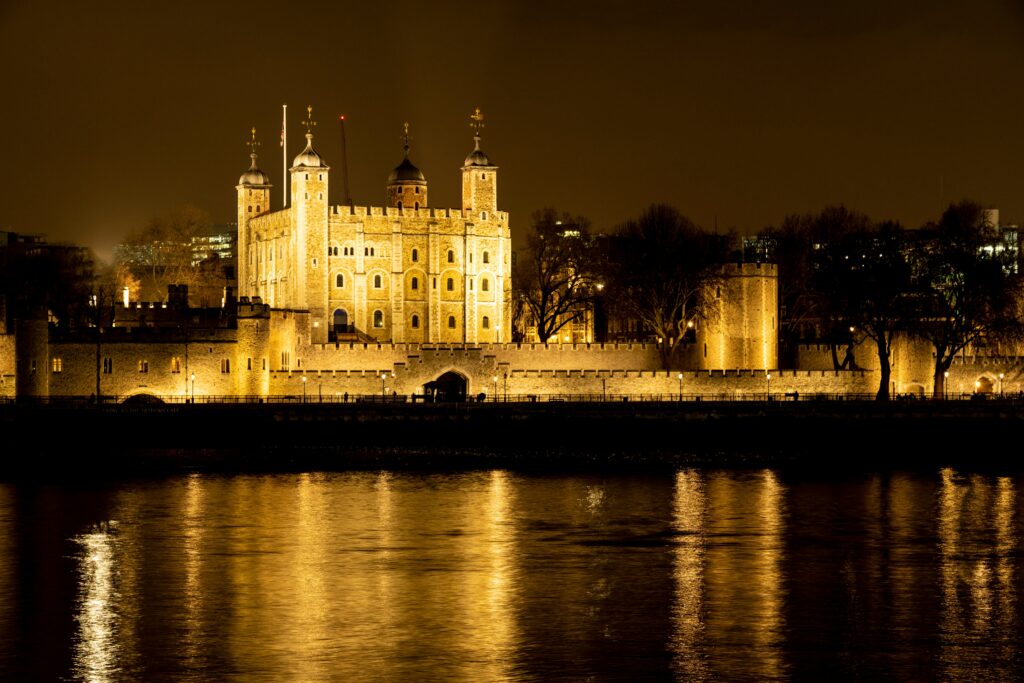Anne Boleyn: Queen of England and a Norfolk mother. Around Mother’s Day, we of course like to honour our own mothers and those mothers we know around us. It’s a difficult job, and quite a few of us know of the struggles that often arise in motherhood. However, historically, motherhood was even harder. Often there was very little choice for a woman in Tudor society in whether or not she became a mother. Child mortality rates were high and deaths during childbirth common. In a heavily patriarchal England, women whose husbands passed away were often left with very little money, or a way to obtain it, and that would simply compound the other problems they would experience. Amongst nobility, women were expected to pass their children on to groups of servants who would raise them and the actual mother would not get the chance to spend the time with them that they might have desired. So, with all of this in mind, we thought we would dedicate this blog to looking back on one of Norfolk’s fiercest mothers, Anne Boleyn and the struggles she faced in having children.
Anne Boleyn: Queen, Mother and Martyr
Anne Boleyn, the strong second wife of Henry VIII who sadly was executed at the hands of her calculating and vicious husband. She is remembered fondly, here in Norfolk, due to her residence at Blickling Manor (where Blickling Hall stands today) near Aylsham and the several ghost stories and legends associated with her around the area. We often remember Anne due to the injustice she faced and for the fact that she was a bright and incredible young woman, cut down at a young age at the whim of a calculating King who would let nothing stand in his way in the pursuit of a male heir. We often forget that she was also the mother of a future Queen of England and sadly suffered several miscarriages.

Anne was an incredibly well educated young woman who had been schooled in England, Holland and France. She was the daughter of a prestigious wool merchant family and had talents in writing, dancing, songwriting, poetry and literature, politics, court affairs, could speak multiple languages, was adept in history and household management and could charm anyone she spoke to. Her knowledge of French fashion and courtly socialising led her to gain many admirers and her quick wit gave her the reputation of being jolly and sweet but also fiery.
She came back from France at the age of 20, originally as she was being married off to settle a family dispute but the plans fell through and by 1522 she instead became a Lady-In-Waiting for Henry VIII’s first wife, Catherine of Aragon. She was quickly established as one of the most stylish and accomplished women of the court so it wasn’t long before she caught the eye of the King. Henry started pursuing Anne behind his wife’s back, as having mistresses was something that was common, if not expected, of a King of the realm. Anne rebuked the King and seemed to refuse to acknowledge his advances. It could be that she simply refused to be another mistress and her ambitions meant that she would only agree to be with Henry if she was made Queen. It is possible that, because of this, Henry sought the annulment of his previous marriage that ultimately led to his breaking away from the Catholic Church in order to start the Church of England. Indeed, we know that Anne actually helped him in this endeavour. We know that she had spent time in France with people that had raised her with the belief that the church needed reform so she was probably unhappy with the state of affairs under the Pope. She helped depose Cardinal Wolsey who was against the reformation of the church, and had him removed from office. She even helped solidify relations with France to help garner the French King’s support during England’s exit from Catholicism. All before she had married Henry!
After the annulment of Henry’s previous marriage and after Catherine had been exiled from the court, Anne and Henry married and she was made Queen (she was married using Edward I’s crown which is still used today but was the only consort, rather than monarch, to have this happen.) At this point she was to retire to Greenwich Palace to have her child. A child that both Anne and Henry assumed was a boy and therefore the next heir to the Tudor throne. To their dismay, however, Anne gave birth to a girl (the future Queen Elizabeth I of England) and Henry VIII was angered that he still didn’t have an heir. It appears as though both parents loved Elizabeth in their own ways however, as Henry held a lavish Christening for her and Anne was known to apparently embarrass the court with her un-queenly public affection she displayed toward her daughter.
However, it didn’t last long. As Queen consort, it was not Anne’s job to raise her daughter but that of a team of wet nurses and servants. Elizabeth was taken from her and she was not to visit her often as she had to focus on her duty as Queen. However it is thought that one of the reasons that Queens were not to feed their own children was so that they were ready to become pregnant sooner (breast feeding directly affects fertility.) After all, in the Tudor period, the main duty of a Queen was to provide the King with a male heir to continue the bloodline. Contemporary accounts speak about the times where Anne could see Elizabeth and how she would barely allow her to leave her side during those visits. Rather than shutting her away in a nursery, she would have her seated next to her on a cushion in court and was seen often laughing and singing with her which was apparently not good conduct for a Queen of the realm! However, life for Anne after the birth of her daughter quickly started to go downhill.

With a daughter being born instead of a son, Henry was disappointed and this quickly turned to anger aimed at Anne when she had three miscarriages following Elizabeth’s birth. The first of these occurred on the day of a party held by Henry to celebrate the death of his first wife Catherine (sounds harsh but about right for Henry) in January of 1536. It is thought that it was around this time that Henry started pursuing Jane Seymour, his future third wife. In fact, there is a recorded incident in which Jane started showing off a locket given to her by Henry in front of Anne and she became so enraged that she ripped it from Jane’s neck, drawing blood from her own fingers in the process. Anne must have been terrified, having seen that bad things happen to Queens unable to produce a male heir and the stress would have certainly had an effect on her future pregnancies. By her third miscarriage, Henry no longer had any patience left for Anne and he was looking for ways to end the marriage. The one benefit to no longer being attended to by her husband was that Anne could spend more time with Elizabeth, dressing her in fine clothes, playing with her and just generally enjoying spending time with her after a long separation.
As Anne recovered from her third miscarriage, Henry tried to distance himself from his wife by saying he had been drawn into the marriage through witchcraft. Together with his Chief Minister, Thomas Cromwell, he came up with several potential crimes that Anne had supposedly committed and soon had her arrested for them. These included accusations of infidelity, accusing Anne of having affairs with several courtiers that Henry also had arrested. He even accused her of incest, insisting that Anne had slept with her own brother. The men with whom she had supposedly had these affairs were tortured until they confessed and then executed. All of these accusations were completely baseless but the worse was yet to come. Henry accused his wife of trying to kill him, through the “shock of the affairs” she had “conducted”, which allowed him to level the most severe accusation at her, treason. The penalty for which was death. Anne was seen in the courtyard of Greenwich Palace, clutching her two year old daughter and shouting angrily with the King standing at a window, trying to plead her innocence, but was sent a few days later to the Tower of London and Elizabeth was taken away from her and banished from the court.

Once interred in the tower, Anne feared for her daughter’s safety. As a product of a royal marriage, Elizabeth could be used as a political tool or even killed for being associated with the Boleyns. As a result, Anne cooled her defiant feelings and adopted a persona of joviality in her final days, accepting the fact that she was to die, all in an attempt to protect her daughter. Despite her acceptance of her fate, she never once admitted to any of the crimes she was found guilty of and lightly alluded to her innocence whenever she could. Even in her final days, many of those around her, including the Archbishop of Canterbury, were incredibly sympathetic towards her. Sadly, Anne Boleyn was beheaded by a French longswordsman on Tower Green on the 19th May 1536. The one positive we can draw from her tragic end is that, despite not providing the King with a male heir, her own daughter Elizabeth later took the throne and ruled as a powerful, single, monarch. One that, arguably, far outshone her father.
Sources